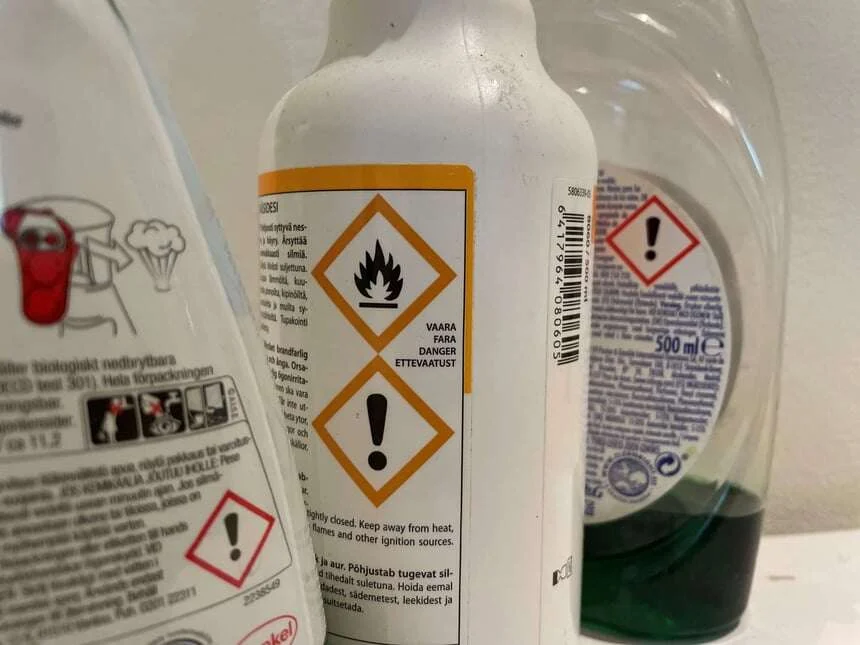
Acute Exposure Meaning & Definition
What is Acute Exposure?
Acute exposure simply refers to excessive contact with a particular substance. Exposure generally means contact, and any substance, no matter or harmful, can’t really cause any damage unless you’re exposed to it.
Acute exposure simply refers to the dosage that a person comes into contact with. Depending upon a person’s own weight and health conditions, exposure to different dosages may be harmful.
For instance, the same dosage of a substance might be harmful to a child, but not an adult. The more exposure to a particular substance, the more severe the health effects are likely to be.
Reduce Workplace Incidents by Managing Chemical Risk
Empower your team to handle chemicals with confidence.

Acute exposure generally means exposure to a particular substance that doesn’t last for longer than a day and leads to significant harm.
Acute exposure is different from short-term exposure, which often causes a negative cumulative health effect. Acute exposure, on the other hand, results in an instant negative impact on a person’s health, though in most cases, these effects can be reversed with proper treatment.

Why is it Important to Understand Acute Exposure?
Acute exposure is simply a term that defines the severity of exposure to a hazardous chemical or substance. It’s generally caused due to a single instance of exposure, and if employees aren’t aware of the harmful effects, they could suffer the health effects for a long while.
For instance, acute exposure to a radioactive substance, even for a short period of time, could prove to be immensely harmful to a person, and may lead to life-long impairment or health effects. Similarly, acute exposure to corrosive substances could result in immediate body tissue damage.
It’s also important to understand that acute exposure is different from chronic exposure, which occurs over a longer period of time repeatedly.
If employees are not aware of the harmful effects of acute exposure to a specific substance, they might not be able to seek immediate medical attention, which could exacerbate their health problems.
Understanding the amount of exposure that’s deemed safe is important, and the threshold varies from one substance to another. It’s also important to know the different methods of exposure, and how each one may differ in terms of the impact that they cause.
How Acute Exposure Occurs
Acute exposure to a substance can occur in three major ways. It essentially defines the route through which the substance comes in contact with a person. This includes:
Ingestion
If a person swallows a harmful substance, it could result in acute exposure. Certain chemicals which are not to be ingested can lead to a negative reaction, causing diarrhoea, nausea, vomiting, or other harmful effects.
When ingested, harmful substances are often absorbed into the bloodstream, resulting in chemical changes within the blood and causing harm.
Direct Contact with Skin
Coming into direct contact with certain substances can result in acute exposure, as these substances are often absorbed through the skin. They enter the bloodstream, causing harm, and in some cases, resulting in long-term organ damage.
The risk of direct contact often increases if the exposure is in an area with broken or cracked skin, such as an open wound.
Inhalation
If a person ends up breathing harmful gases, they could get absorbed through the lungs and enter the bloodstream. Inhalation is one of the most common routes of exposure, especially if proper respiratory protection or PPE is not available.
Sensitivity
Sensitivity is an important component to factor in when calculating acute exposure. Not all people share the same level of sensitivity when exposed to different chemicals.
Depending upon a person’s age, use of alcohol, existing medical conditions, diet, and other things like medicinal or non-medicinal drug use, their sensitivity to substances might be different.
Following Acute Exposure Guidelines
Acute exposure guideline levels are developed by regulatory bodies and other organizations, including manufacturers. These guideline levels are simple estimations that determine when a person may start experiencing health effects due to the exposure.
More than 175 substances have AEGLs, with 80 others that have temporary AEGLs in place.
Reduce Workplace Incidents by Managing Chemical Risk
Empower your team to handle chemicals with confidence.
Improve Workplace Safety with EcoOnline’s Chemical Safety Software
EcoOnline’s Chemical Safety Software makes it easy for companies to report on their chemical use and to ensure that employees have specific information about the kind of chemicals that they’d come in contact with.
The company can provide information about safely handling these chemicals and provide information about how to reduce exposure using the simple, cloud-based solution. This helps improve safety in the workplace and greatly limits instances related to acute exposure to harmful chemicals.




